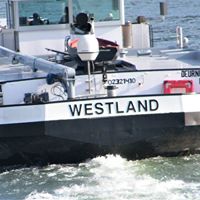What do pilots use to detect turbulence?

I think the concept of “turbulence” has gotten a bad reputation.
Just like the wind, and partially related to it, turbulence isn’t an On or Off thing; it’s a spectrum.
Step outside one day and a light breeze might be hard to feel while the next day, you might have trouble holding onto your hat because the wind is so strong. But most of the time it’s somewhere in between those extremes.
Turbulence is exactly the same. Some days, some places, nothing. Some days it can rattle your teeth (or turn your stomach). But most of the time when turbulence exists it is light or at worst case slightly annoying.
Weather forecasts provide estimates when there might be turbulence. The thing to remember is the noun “forecast.” It’s not a guarantee that it will be turbulent, nor is the lack of mention of turbulence in a forecast a guarantee that there won’t be turbulence.
In addition, turbulence can be widespread as well as very localized.
I typically detect or expect serious or widespread turbulence as well as local turbulence in one of three of ways:
- Cumulus clouds — If the clouds are tall and vertical and /or getting taller then there is a good chance there is turbulence around. The taller the clouds and the faster they are growing, the worse the probable turbulence. Especially IN the clouds. The worst example of that would be a Thunderstorm. The turbulence within a thunderstorm can tear an aircraft apart.
- Hot days — Also known as Convection, warm and, especially, HOT days means that the hot air is rising and the reciprocal, cold air is descending. That’s a recipe for turbulence. Depending upon the temperature and the aircraft’s altitude the turbulence can be irritating or it can be very uncomfortable.
- Wind — Wind can “tumble” especially downwind of mountains — often for many miles downwind — and it can even be turbulent over mountains as winds are encouraged to rise following the upwind mountain side.
With very few exceptions for the most part turbulence isn’t dangerous. At least to aircraft. Pilots know how to manage turbulence, often simply by slowing the aircraft’s airspeed and/or changing altitude.
However, Clear Air Turbulence (CAT) — severe turbulence that happens in what otherwise seems to be a calm clear air — can cause injuries to passengers that aren’t wearing seat belts or, worse, are walking. And CAT is very difficult to detect until you experience it.
BTW, Clear Air Turbulence got its name because although turbulence is often accompanied by clouds, this particular form isn’t. Hence the name…
Have you ever been caught by severe turbulence? You are welcome to share your experience in the comments below!
Interesting Facts
Zen Buddhist wisdom that will bring peace to your soul
8/3/2021
by
brian l
Here are pieces of Buddhist philosophy that will help you to look inside and discover the truth about yourself.
An abandoned cat becomes an Instagram sensation after finding a home
8/2/2021
by
brian l
This post is about a really cute cat that had no idea how popular he was going to get after getting his new home.
9 things that should be used to make our lives easier
8/15/2021
by
brian l
With these nine images, we would be showing things that should be used worldwide to make our lives better!
7 things people never expected to see
8/8/2021
by
Della Moon
These pictures of unusual objects people stumbled upon and had a chance to take a picture of will absolutely blow your mind!
You never knew these 8 facts were actually true!
8/7/2021
by
Della Moon
Get ready for a set of big surprises, as you definitely never expected these 8 facts to be true...















